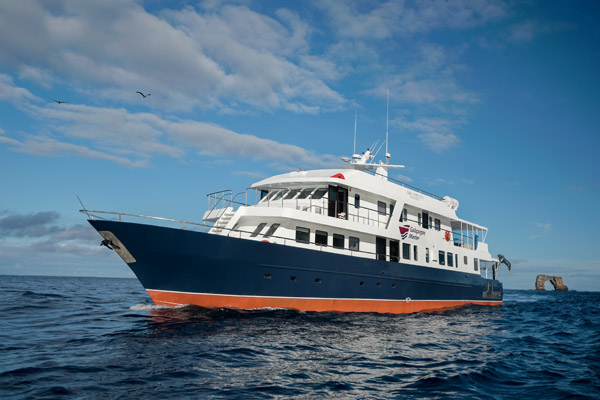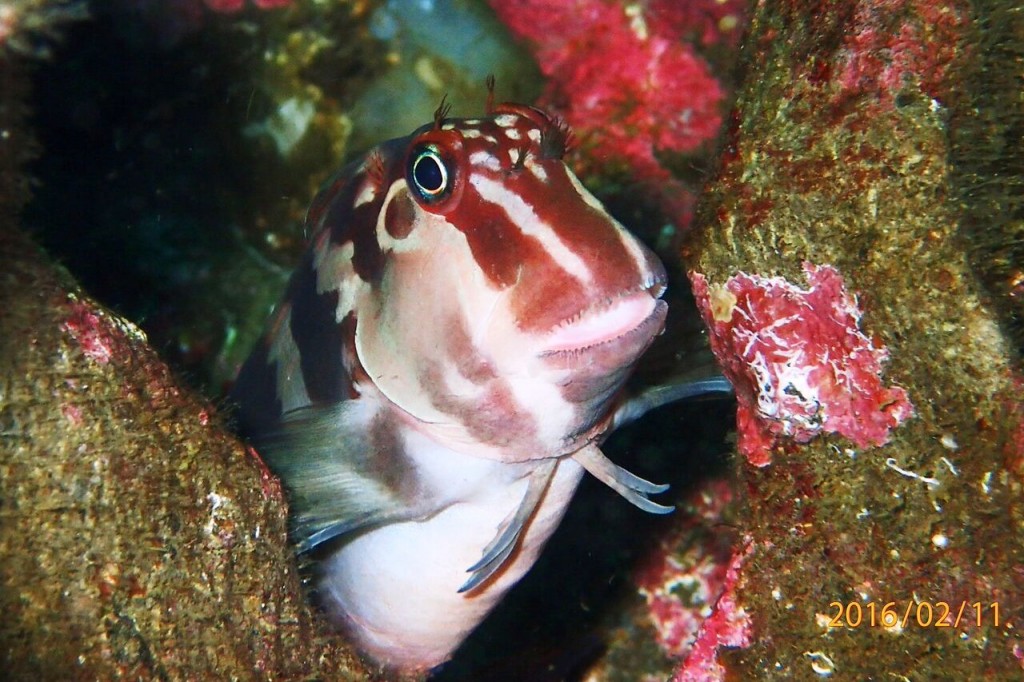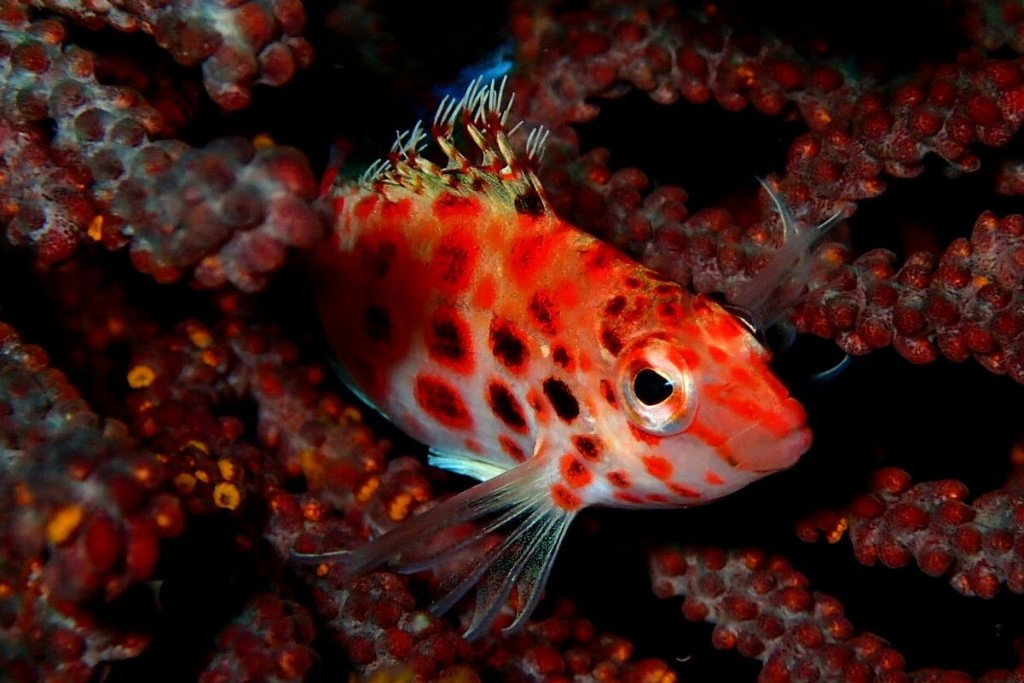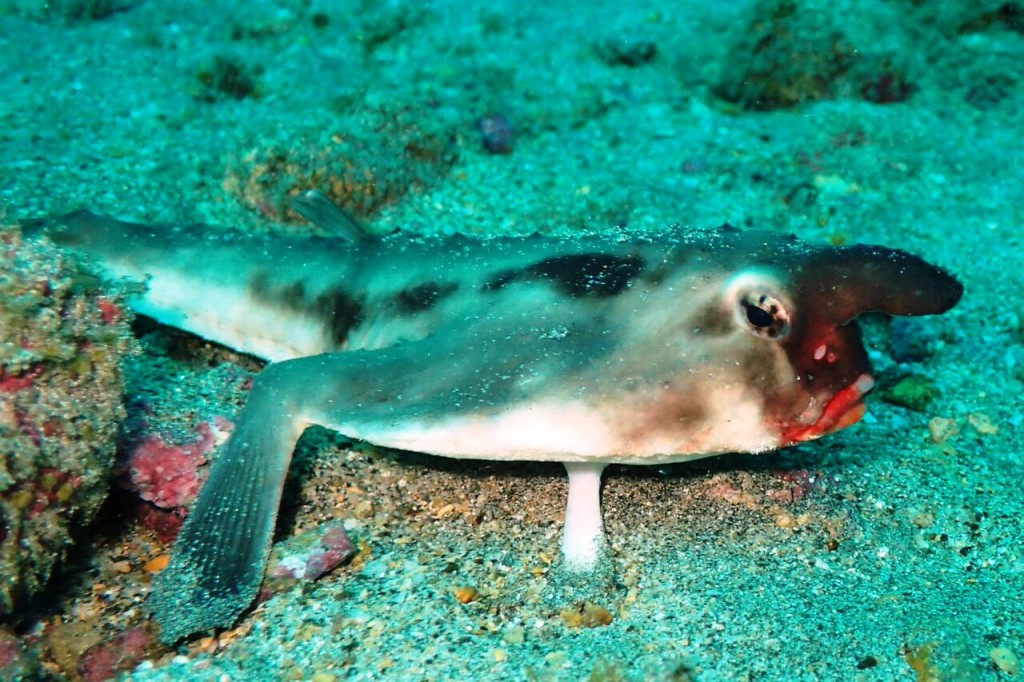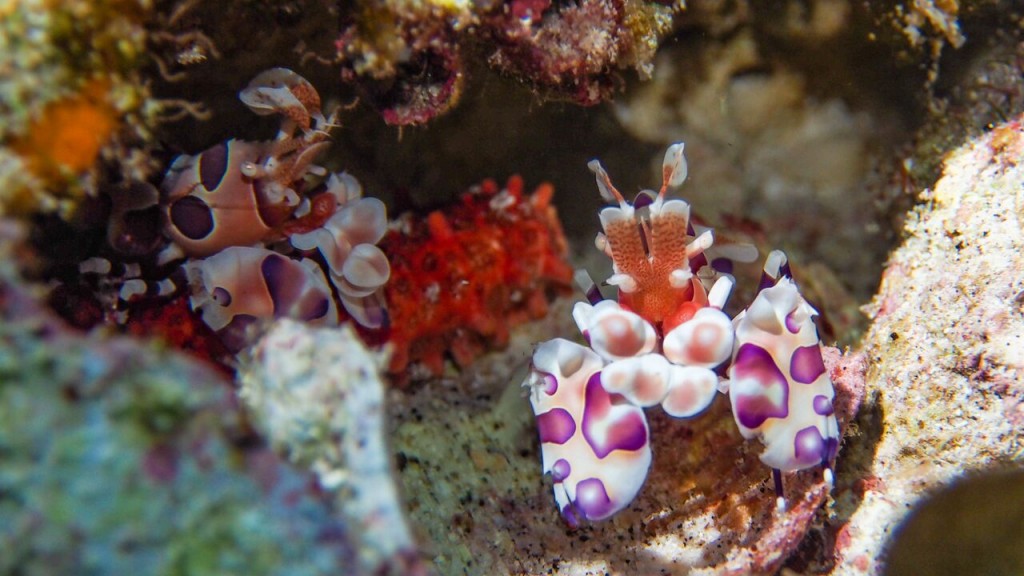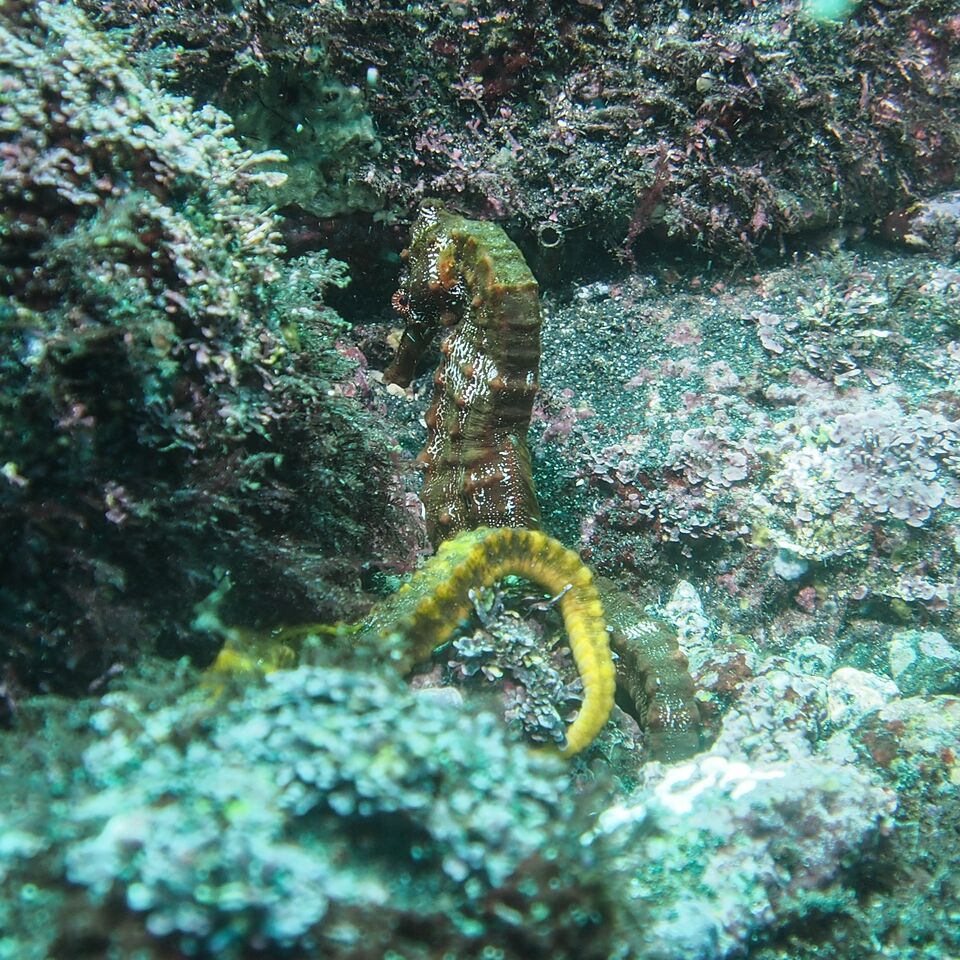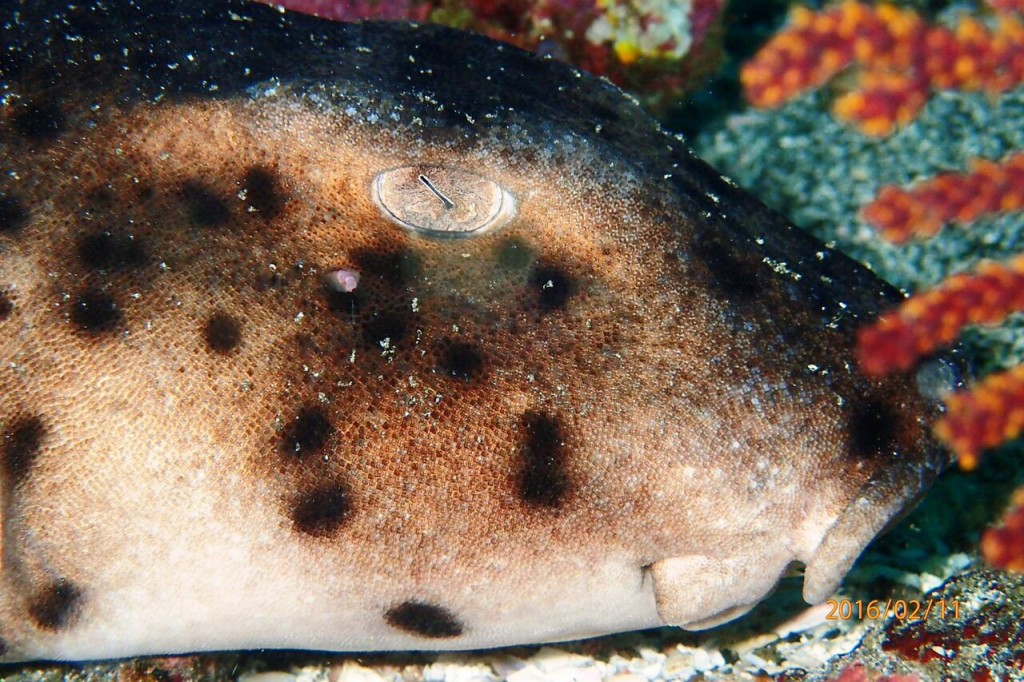News
All Creatures Great and Small in the Galapagos
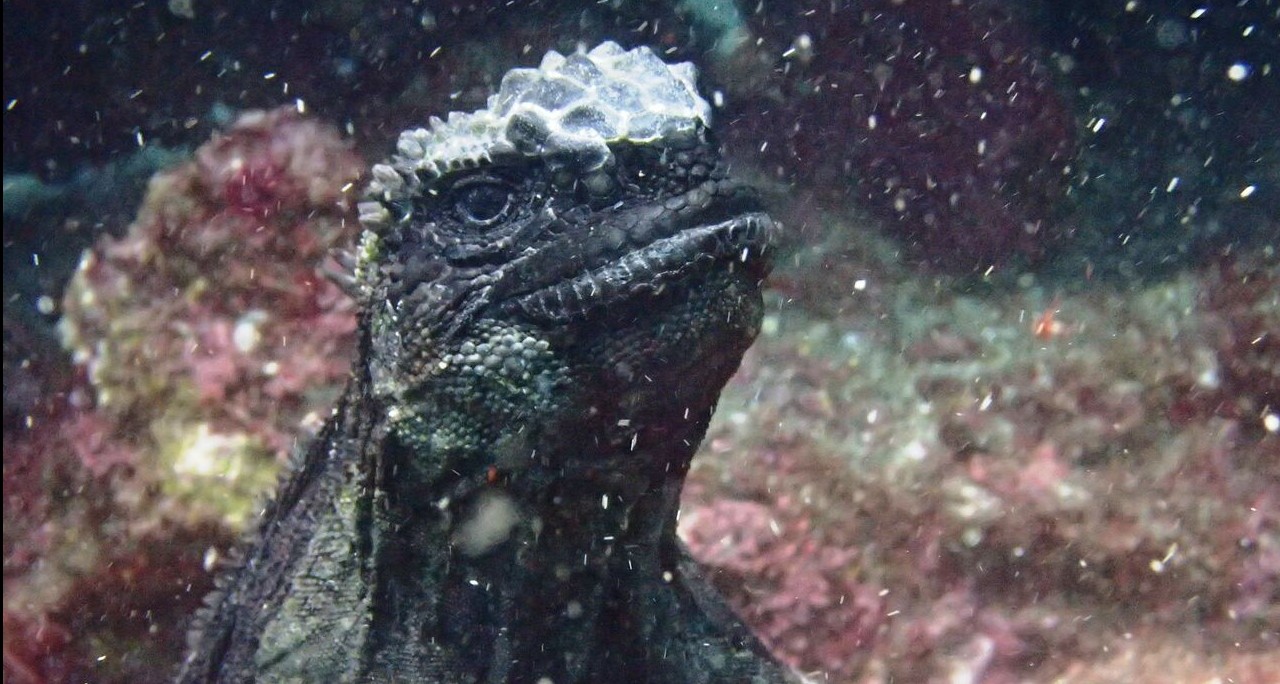
“Macro Photography” and “the Galapagos” are not two phrases you would commonly hear in the same sentence. The majority of divers and underwater photographers travel to the Galapagos Islands for the abundance of hammerhead sharks and other large pelagic fish species. With the focus of attention on the wealth of life out in the blue, there is a tendency to overlook the smaller creatures, but on a recent trip aboard the Galapagos Master I decided to put my new TG4 camera to the test and do a bit of critter hunting.
Before you all start hollering in disbelief, I of course had my time gazing in awe as schools of hammerheads came in to be cleaned by the king angelfish. I, like the rest of our dive group, excitedly snapped away as a whale shark cruised by us at Wolf Island and diving with Mola Mola at Punta Vicente Roca was a dream come true. Yet in between all that action there was a good deal of waiting around holding onto the rocks, so it was easy to spend some time checking out the cute blennies or marveling at the curious hawkfish.
Like most dive sites, if you look hard enough at the reef or rock wall there will always be something of interest to photograph. At Darwin and Wolf islands the blennies were happy to pose and an easy, fascinating distraction whilst waiting for more hammerheads. My favourites were the large banded blennies, due to their gaping mouths and attractive cirri, but also the ability to photograph them in different settings.
Along the reefs wall of Cabo Douglas and Isabella Island amidst black coral bushes and seafans there were dozens of Long-nosed and Falco hawkfish. Now anyone who has ever tried to take a photo of the long-nosed variety will know they are tricky little critters who like to hop and hover about, flitting off just as you got the focus set. But not so with the ones seen in the Galapagos. Perhaps they were unused to divers and flash photography but they seemed happy enough to hang about and pose for me. I experienced the same action again at Cousin’s Rock where 3 of the Falco variety happily stayed in place, turning occasionally to give me a different angle – how very obliging!
Possibly the most odd looking fish to be found during the trip, the Red-lipped batfish is a flattened pancake shaped fish with protruding “lips”, beady eyes and pectoral fins adapted into walking appendages. We found our first ones at Wolf Island, resting down on the sandy seabed at 27-32m. These fish can be approached by divers but you need to be cautious as they can swim pretty fast and tend to head directly to deeper water. Positioning ourselves between the deep and the batfish the photographers among us were able to get some cracking shots. We also discovered that we had seen the lesser known Rosy-lipped batfish too. These can be identified by the small white hairs under their chins! Another one was found at Cabo Douglas too.
Red rock crabs could be found scurrying over the rocks at almost every dive site and were easy to photograph both in and out of the water. But it was during our batfish hunting dive that I managed to spot a tiny shrimp exhibiting symbiosis with its seastar host – admittedly my photo is pretty bad but i was happy to find it in any case. Though the most surprising find was whilst drifting over the sandy reef at Darwin’s Arch. Our guide, JC, spotted two Harlequin shrimp busy tackling their seastar meal. This was totally unexpected; I’ve only seen a few harlies in the Philippines so was in no way anticipating finding any in the Galapagos. I think JC was as surprised as we were!
I read about the possibility of seahorses on the Galapagos Master itinerary, so upon arrival at Cabo Douglas we asked about the opportunity to look for these critters. The majority of us have seen seahorses of many varieties but for one of our group it was a first time experience. We found 2 curled around a coral frond in the shallow water. These pacific seahorses are far larger than their Indo-Pacific cousins and gigantic when compared to the miniscule pygmy seahorses of Raja Ampat.
Aside from these fascinating tiny critters we were able to closely approach both turtles and the Galapagos horn shark for a bit of eye candy, we found numerous lobsters and scorpionfish and it was relatively easy to get up close with the marine iguanas as they were feeding on the algaes. The shallow water with surge and low visibility made photographing them a challenge but certainly everything was possible. The anemones at Punta Vicente Roca also provided colourful macro subjects.
There are so many interesting creatures to see and photograph in the Galapagos Islands that no dive, even if lacking the big fish action, will ever be dull. Consider bringing a macro lens with you and dedicating at least 1 dive to a bit of critter spotting.
Susie took a 10-night trip aboard the Galapagos Master Liveaboard, departing from San Cristobal Island.
News
Book Review: Fire on Monroe Bravo by Fred Lockwood

Fire on Monroe Bravo is the latest book in the Jack Collier series by Fred Lockwood. Our story begins with our lead characters, Jack and Sandro, owners of Marine Salvage & Investigation Company, arriving on the Monroe Bravo Oil & Gas Platform in the North Sea. Having secured a contract for their vessel the MV Stavanger to act as support ship to the platform for TransGlobal Oil, our protagonists are on a celebratory visit.
However almost as soon as they arrive a series of explosions rock the platform, causing huge damage, loss of life and the very real danger of a massive human, ecological and financial disaster.

As the danger mounts for both our heroes and the surviving workers, Jack and Sandro will have to escape the inferno, all while trying to save the platform and the men still trapped unable to help themselves.
The disaster sets the scene for the unfolding story lines following the fate of the platform and our main characters, the police investigation into a suspected terrorist act and the actions of TransGlobal Oil as they attempt to navigate the pubic outcry and financial repercussions.
In his eighth book, Fire on Monroe Bravo, Fred Lockwood delivers an explosive thriller, with plenty of above and in-water drama, and our heroes fighting for survival, what more can you ask for?
We thoroughly recommend this read and look forward to the next in the series. For more information about his book series, you can check out the reviews of his previous books here on Scubaverse.
- Title: Fire On Monroe Bravo
- Author: Fred Lockwood
- ISBN: 979-8325324536
Available in a paperback version and for Kindle from Amazon and book stores.
Blogs
Alonissos: The complete diving destination (Part 1)

In June we were incredibly fortunate to be invited to dive in Alonissos, a small Greek Island in the Sporades island chain located in the North Aegean Sea. While I have long been a big fan of the Greek Islands as a great holiday destination, I had not had the opportunity to do any diving on previous visits and Mike and I were extremely excited to see what Alonissos had to offer both above and below the surface!

The Sporades are easily accessible via the airport in Skiathos (the first island in the chain), which is served by Jet2 flights from all major UK airports from May through October. Numerous ferries and charter boats make island hopping from Skiathos Town a breeze. After an hour boat ride, the picturesque port of Patitiri was a wonderful introduction to Alonissos, where we were met by our gracious hosts Kostas of Albedo Travel and Dias of Alonissos Triton Dive Center. Mike and I were delighted to be staying at the Paradise Hotel, aptly named for its stunning views over the sea and great location for walking to the waterfront.

Alonissos is beautifully situated in the National Marine Park of Alonissos and the Northern Sporades, the largest marine protected area in Europe. The surrounding seas offer fabulous marine life, including incredibly rare species such as the Mediterranean monk seal. They boast deep walls covered in gorgonians and sponges, stunning topography with caverns, swimthroughs and pinnacles, and the first accessible ancient shipwreck from 500BC!

In locations where historical sites have been reported, the waters are largely restricted, but with collaboration between government, underwater archeologists and dive centres, incredible underwater museums are being created for a truly unique diving experience. Alonissos is home to the first of these, the Ancient Shipwreck of Peristera Accessible Underwater Archeological Site. The chance to dive into history (along with reports of healthy reef life and amazing underwater topography) meant Mike and I were keen to get in the water.

Our introduction to the diving around Alonissos was at the Agios Georgios Pinnacles, in the channel between Alonissos and Skopelos. This fantastic site was named “The Chimney,’ and proved to have a huge amount to see. We got to a decent depth here (over 25m), and marvelled at a colourful reef wall with a wonderful swim through whose rocky walls were absolutely covered with life. As well as brilliant topography there was no shortage of macro life here. We saw numerous nudibranchs, five different species in total. The second dive at Mourtias reef nearby was a shallower dive along a nice wall with lots of crevices. Several moray eels and grouper called this site home. We enjoyed looking in the crevices for lobster and smaller benthic life, such as cup corals and tunicates.

Our itinerary allowed us two dives a day with afternoons left to explore the island with our hire car and evenings to enjoy the famous Greek hospitality. This proved to be a lovely mix of in-water and land based diversions.

The next days diving to the Gorgonian Gardens and Triton’s Cave was to be even better! These two stunning sites are nothing short of fabulous. The Gorgonian Gardens was a deep wall near to the Agios Georgios islands. The ever-present currents in this deep channel meant that the sea life was amazing … the namesake Gorgonian sea fans dotted the wall at a depth of 30 to 50 meters, getting ever larger the deeper we went. Above 30m was by no means less beautiful, with sponges, corals, scorpionfish, moray eels and some rare and colourful nudibranchs.

The second shallower dive of the day was to Triton’s Cave or the Cavern of Skopelos, on the east side of that island. The spectacular rock formations had wild striations both above and below the water making a truly epic topography. The cavern entrance was at 14m, and big enough for a buddy pair, winding up to 6m and passing two beautiful windows out into the blue. Emerging from the cavern, the light at the shallower depths and the incredible rock formations made for a fantastic gentle swimming safety stop and we all surfaced by the boat with massive grins.

Check out our next blog :Alonissos: The complete diving destination (Part 2)” to hear about our amazing dive on the 2500 year old Peristera Wreck!
Thanks to:
Alonissos Triton Dive Center https://bestdivingingreece.com/
Albedo Travel https://alonissosholidays.com/activities/
Paradise Hotel https://paradise-hotel.gr/
Alonissos Municipality https://alonissos.gr/en/
-

 Blogs2 months ago
Blogs2 months agoDiving With… Nico, Ocean Earth Travels, Indonesia
-

 News1 month ago
News1 month agoMurex Bangka Announce New Oceanfront Cottages & Beachfront Dining
-

 Blogs2 months ago
Blogs2 months agoA new idea in freediving from RAID
-

 Marine Life & Conservation1 month ago
Marine Life & Conservation1 month agoIceland issue millionaire whale hunter a licence to murder 128 vulnerable fin whales
-

 Marine Life & Conservation2 months ago
Marine Life & Conservation2 months agoThe Shark Trust Great Shark Snapshot is back
-

 News3 months ago
News3 months agoCharting New Waters; NovoScuba Goes Global with the Launch of their Revolutionary Dive Training Agency!
-

 Gear News1 month ago
Gear News1 month agoNew Suunto Ocean – a dive computer and GPS sports watch in one for adventures below and above the surface
-

 Marine Life & Conservation Blogs2 months ago
Marine Life & Conservation Blogs2 months agoBook Review: Plankton


